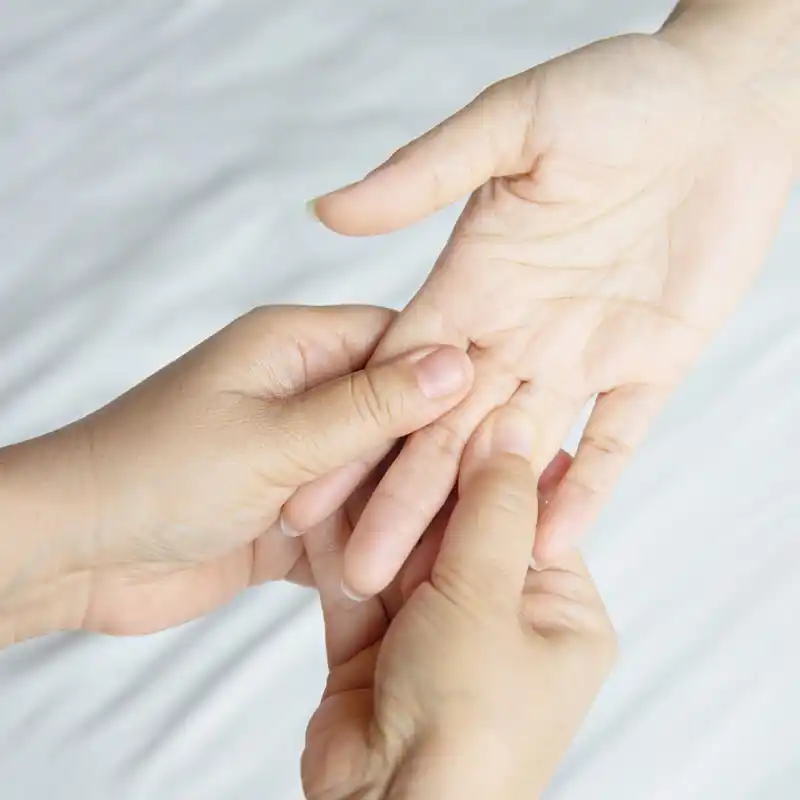TOP TREATMENT FOR TENDON PAIN IN WRIST, hand, finger, and elbow
Treatment For Tendon Pain In Fingers, Hand, Wrist & Elbow.
While healing the initial trauma following an injury should certainly be your first priority, it’s important to remember that a wide range of conditions can find their roots in an initial injury to the nerves and tendons in the wrist. With this in mind, it’s important to consult an experienced specialist like Dr. Spiess at Pittsburgh Hand & Nerve in order to achieve an accurate diagnosis and begin the appropriate treatment plan.
Here are some of the most common tendon conditions that can arise following an injury:
- Trigger finger: An inflammation of the tendon of the finger, which causes clicking or locking of the finger.
- ECU Tendonitis: An inflammation of the tendon in the back of your wrist which can occur after repeated twisting motions during work, sports or other activities.
- DeQuervain's Tenosynovitis: A condition in which the tendon along the side of your thumb becomes inflamed and painful following repetitive motion.
- Tennis Elbow/Golfer’s elbow: Overuse injury to the elbow tendons due to sports or work, which cause pain with movement of the fingers, wrist, or elbow.
- Cut tendon with loss of finger or wrist movement: Sometimes a cut of the skin can cause an injury to the tendon underneath the skin, resulting in loss of movement of the finger or wrist.
If any of these conditions sound familiar, don’t wait. Schedule your appointment with Dr. Spiess at Pittsburgh Hand & Nerve so you can procure an accurate diagnosis and begin taking your first steps toward recovery.

specialist FOR HAND, WRIST, AND ELBOW PAIN IN PITTSBURGH
Experienced Treatment for Tennis Elbow/Golfer’s Elbow (Elbow Tendonitis)
Tennis elbow (lateral epicondylitis) and Golfer’s elbow (medial epicondylitis) are painful conditions that occurs when tendons in your elbow are overloaded, usually by repetitive motions of the wrist and arm. Despite its name, athletes aren't the only people who these injuries. People whose jobs feature the types of motions that can lead to elbow tendonitis include plumbers, painters, carpenters and butchers. The pain of elbow tendonitis occurs primarily where the tendons of your forearm muscles attach to a bony bump on the outside of your elbow. Pain can also spread into your forearm and wrist. Rest and over-the-counter pain relievers often help relieve elbow tendonitis. If conservative treatments don't help or if symptoms are disabling, your doctor might suggest surgery.
Treatment
Elbow tendonitis often gets better on its own. But if over-the-counter pain medications and other self-care measures aren't helping, your doctor may suggest physical therapy. Severe cases of tennis elbow may require surgery.
Therapy
If your symptoms are related to sports or your job, your doctor may suggest that experts evaluate your technique or the movements involved with your job tasks to determine the best steps to reduce stress on your injured tissue.
A physical therapist can teach you exercises to gradually stretch and strengthen your muscles, especially the muscles of your forearm. Eccentric exercises, which involve lowering your wrist very slowly after raising it, are particularly helpful. A forearm strap or brace may reduce stress on the injured tissue.
Surgical or Other Procedures
- Injections: Your doctor might suggest injecting platelet-rich plasma, Botox or some form of irritant (prolotherapy) into the painful tendon. Dry needling — in which a needle pierces the damaged tendon in many places — can also be helpful.
- Platelet Rich Plasma (PRP): Platelet-rich plasma therapy uses injection of a concentration of your own platelets to accelerate the healing of injured tendons, ligaments, muscles, and joints. PRP injections are prepared by taking a small amount of your own blood and running it through a centrifuge to concentrate the platelets. These activated platelets are then injected into your injured or diseased body tissue. This releases growth factors that stimulate and increase the number of reparative cells your body produces. PRP has been shown to enhance the healing process, and improve function and reduce pain in people who have tendonitis or chronic tendinosis such as Tennis elbow or Golfer's elbow.
- Surgery: If your symptoms haven't improved after six to 12 months of extensive non-operative treatment, you may be a candidate for surgery to remove damaged tissue. These types of procedures can be performed through a large incision or through several small incisions. Rehabilitation exercises are crucial to recovery.
If you’re struggling with any of these symptoms, treatment is available, and it’s important to seek medical care as soon as you possibly can. Schedule your first appointment with Dr. Spiess at Pittsburgh Hand & Nerve, and he’ll begin putting together an individualized treatment plan that works for you!
Frequently Asked Questions
Can tendonitis cause nerve pain?
Yes. If the tendons in your hands and wrists swell significantly -- particularly the tendons located in your wrist’s carpal tunnel -- they can press against the nerves in the area, causing painful or numbing nerve compressions.
What is the typical torn tendon in wrist recovery time?
Every patient is unique, and so is their treatment plan. When you have your consultation with Dr. Spiess, he will outline your recovery for you based on your individual circumstances, needs, and goals.
How can I get started with the best hand and wrist specialist near me?
You can schedule your first appointment with Dr. Spiess at at Pittsburgh Hand & Nerve online. Just use our online scheduling tool, or call our office at 412-679-4263 if you’re more comfortable scheduling over the phone.
